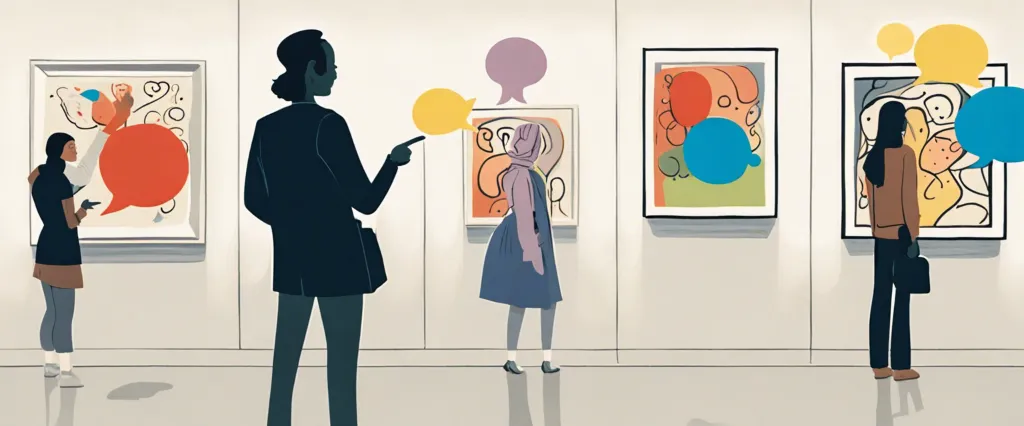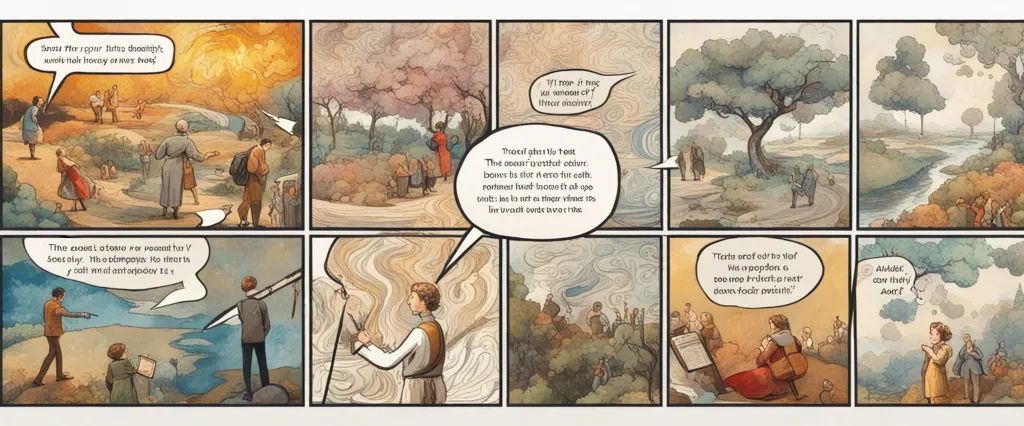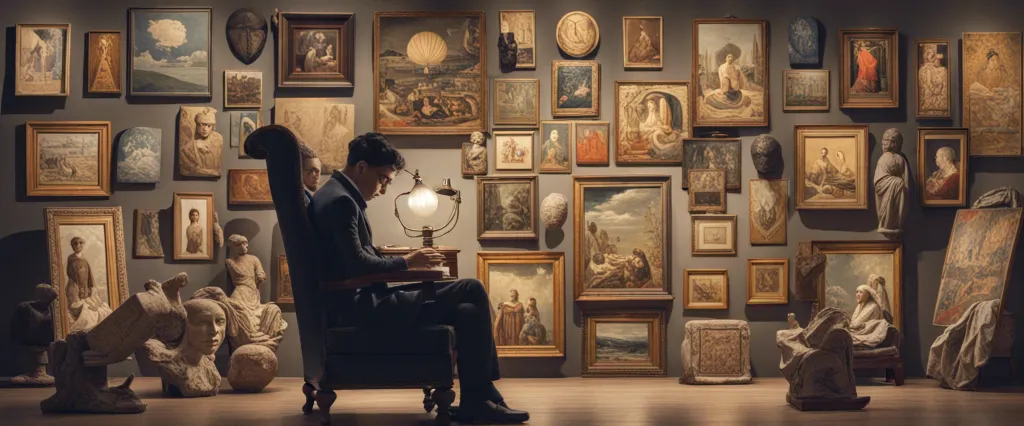
In the acclaimed book “The Story of Art,” E.H. Gombrich takes readers on an eloquent journey through the origins, developments, and significance of art throughout human history. This timeless masterpiece has captivated art enthusiasts, scholars, and novices alike since its first publication in 1950. Renowned as an eminent art historian, Ernst Hans Gombrich, known as E.H. Gombrich, was born in Vienna, Austria in 1909. Throughout his remarkable career, Gombrich contributed significantly to the understanding and appreciation of art and its influence on society. His profound insights and accessible writing style have made him one of the most treasured voices in the realm of art history. Now, let us embark on a captivating exploration of the world of art, guided by E.H. Gombrich’s wisdom, passion, and expertise.
Chapter 1: The Prehistoric and Ancient World
Chapter 1 of “The Story of Art” by E.H. Gombrich provides an overview of the prehistoric and ancient world of art, spanning from the Paleolithic period to the Roman Empire.
Gombrich begins by pointing out that the earliest art known to humanity dates back around 30,000 years ago, during the Paleolithic or Old Stone Age. This art primarily consists of cave paintings found in various parts of the world, such as Lascaux in France. The paintings depict animals and hunting scenes, suggesting a connection between early human societies and their environment.
Moving forward, Gombrich introduces the Neolithic period, around 10,000 years BCE when humans transitioned from a nomadic lifestyle to a settled one. This period witnessed the construction of megaliths like Stonehenge in England, which served as religious or ceremonial sites. Neolithic art also included small sculptures and pottery, focusing on fertility and the representation of the human form.
Gombrich then discusses the art of ancient civilizations such as Egypt and Mesopotamia. In Egypt, he highlights the significance of the Pharaohs and their colossal statues, the majestic pyramids, and the elaborate tomb decorations. In Mesopotamia, the art mainly revolved around the powerful city-states, exemplified by the monumental architecture and intricate relief carvings found in archaeological sites like Ur and Babylon.
The chapter concludes by exploring the art of the Greeks, emphasizing their pursuit of the ideal human form, balance, and harmony. Gombrich touches on the development of Greek architecture with the introduction of the Doric, Ionic, and Corinthian orders, which later heavily influenced Roman architectural styles.
In this introductory chapter, Gombrich lays the foundation for the artistic journey that awaits readers in subsequent chapters, providing a brief glimpse into the art of the prehistoric and ancient world.
Chapter 2: The Art of Ancient Egypt
Chapter 2 of “The Story of Art” by E.H. Gombrich explores the art and artistic traditions of Ancient Egypt. The chapter introduces the reader to the unique features and characteristics that defined Egyptian art, as well as its underlying religious and social significance.
Gombrich begins by discussing the monumental and timeless quality of Egyptian art. He emphasizes their focus on permanence, as the Egyptians believed that works of art could potentially last for eternity. This belief is seen in the great pyramids and temple complexes that still stand today, serving as a testimony to their artistic and architectural prowess.
The chapter also explores the religious context of Egyptian art. Egyptian civilization was deeply religious, and their art reflected this by predominantly depicting gods, goddesses, and pharaohs. Gombrich explains the importance of symbolism in Egyptian art, as many of the representations had a deeper meaning associated with religious beliefs or hierarchy.
Gombrich analyzes the strict conventions and rules followed by Egyptian artists. This adherence to established artistic norms resulted in a sense of continuity and repetition throughout their artistic traditions. The chapter delves into the symbolism and precise hierarchies that governed the depiction of pharaohs, gods, and other figures.
Moreover, the chapter touches on some forms of Egyptian art, such as wall paintings and sculptures. Gombrich highlights the use of hieroglyphs in Egyptian art, which served as a written language and added another layer of meaning to their visual representations.
In conclusion, Chapter 2 of “The Story of Art” provides an overview of the unique artistic achievements of Ancient Egypt. It emphasizes the religious and social significance of Egyptian art, as well as the enduring legacy of their monumental works.
Chapter 3: Classical Greece and Rome
Chapter 3 of “The Story of Art” by E.H. Gombrich, titled “Classical Greece and Rome,” explores the artistic achievements and cultural contributions of two influential civilizations. The chapter begins by discussing the emergence of Classical Greece and its significant advancements in sculpture, architecture, and philosophy.
Greece’s sculpture reached its peak during the 5th century BCE, with the human body being the focus of artistic representation. Artists like Phidias and Myron captured the essence of human emotions and physical beauty, creating sculptures that depicted divine and heroic figures. The Canon, by Polykleitos, provided guidelines for ideal proportions in sculpture, emphasizing balance and harmony.
Moving on to architecture, Greece introduced the concept of the column and entablature system, which remains a fundamental element in classical architecture to this day. The Parthenon, a temple dedicated to the goddess Athena, exemplifies this architectural style with its Doric columns and pediments filled with sculpted reliefs.
The chapter then delves into the art of Ancient Rome, which was greatly influenced by Greece. The Romans excelled in engineering and developed architectural techniques like the arch, vault, and dome, which allowed for monumental structures such as the Colosseum and the Pantheon.
Gombrich also highlights the Roman affinity for portraiture, emphasizing the realistic depictions of individuals that expressed their individuality and status. The Romans adorned their buildings with decorative paintings, vivid mosaics, and intricate frescoes.
In conclusion, “Classical Greece and Rome” showcases the artistic achievements of both civilizations. Greece established the foundation for sculpture and architecture, focusing on idealized human forms and proportion, while Rome perfected architectural techniques and excelled in portraiture and decorative arts. Through their artistic endeavors, both civilizations left an enduring impact on the world of art and continue to inspire generations of artists.
Chapter 4: The Art of the Middle Ages

Chapter 4: The Art of the Middle Ages from the book “The Story of Art” by E.H. Gombrich discusses the artistic developments during the Middle Ages, primarily focusing on Europe. This period, spanning from the fall of the Roman Empire to the Renaissance, is often characterized as a time of darkness and stagnation, but Gombrich highlights the significant artistic achievements that emerged during this era.
Gombrich begins by emphasizing the influence of Christianity on medieval art. Church was central to the medieval society, and art primarily served religious purposes. The chapter explores the various forms of medieval art, including illuminated manuscripts, sculpture, and architecture. The majority of surviving artworks from this period are religious in nature, reflecting the power and importance of the church. Gombrich discusses the elaborate and intricate designs found in illuminated manuscripts, where monks meticulously decorated the pages with vibrant colors and intricate details.
The chapter also delves into the Romanesque and Gothic styles of architecture. Gombrich explains that the Romanesque style, prevalent during the 11th and 12th centuries, was characterized by thick walls, semi-circular arches, and small windows. However, it was the Gothic style that truly revolutionized medieval architecture. With its pointed arches, flying buttresses, and tall stained glass windows, the Gothic cathedrals aimed to create a sense of transcendence and elevate the soul to God.
Furthermore, Gombrich emphasizes the connection between art and society during the Middle Ages. The role of the artist shifted from individual creativity to being part of a collective effort, serving the Church and society. Artists were often anonymous and would dedicate their entire lives to a single project. This collective approach to art is also reflected in the vast number of medieval workshops, where a master artist directed a team of apprentices.
In conclusion, Chapter 4 highlights the artistic achievements of the Middle Ages, showcasing the rich variety of religious art, illuminated manuscripts, sculpture, and architectural wonders. Despite the misconceptions of a “dark age,” Gombrich reveals the creativity, craftsmanship, and devotion that shaped the art of this period.
Chapter 5: The Renaissance
In Chapter 5 of “The Story of Art” by E.H. Gombrich, the author explores the era of the Renaissance, a period of revolutionary artistic and intellectual change that emerged in 15th-century Italy. Gombrich emphasizes the rebirth of classical Greek and Roman ideals during this time, focusing on the rediscovery and admiration of Greek sculpture and the idea of humanism.
The chapter begins by discussing the influence of the sculptor Donatello, whose ability to capture realistic human forms marked a significant departure from the traditional medieval style. Gombrich highlights Donatello’s statue of David, characterized by its naturalistic proportions, as a prime example of this transition.
Gombrich then delves into the revolutionary thinking of Leon Battista Alberti, an architect, sculptor, and writer who played a vital role in defining Renaissance art theory. Alberti’s ideas centered on the concept of man as the “measure of all things,” an idea derived from ancient Greek philosophy. This humanistic perspective placed a strong emphasis on the individual, promoting the idea of the perfectibility of mankind and encouraging the pursuit of knowledge.
Furthermore, Gombrich discusses the works of Sandro Botticelli and his devotion to portraying beauty and harmony. Botticelli’s paintings, such as “The Birth of Venus” and “Primavera,” became exemplary of Renaissance art, characterized by their graceful figures, vibrant colors, and mythological themes.
Lastly, Gombrich explores the revolutionary techniques and innovations of the painter Masaccio, whose use of linear perspective created depth and realism in his works. The author also highlights the importance of perspective in the art of Piero della Francesca, whose meticulous precision and mathematical approach helped establish a new standard in Renaissance painting.
In conclusion, Chapter 5 of “The Story of Art” provides a comprehensive overview of the key figures, ideas, and artistic developments that defined the Renaissance period, emphasizing the revival of classical ideals, the rise of humanism, and the pursuit of beauty and harmony in art.
Chapter 6: The Baroque and Rococo Periods
Chapter 6 of “The Story of Art” by E.H. Gombrich explores the Baroque and Rococo periods, two significant artistic movements that emerged in Europe during the 17th and 18th centuries.
The chapter begins by discussing the Baroque style, which arose in response to the religious and political tensions of the time. It is characterized by its dramatic and emotional themes, as well as its elaborate and dynamic compositions. Gombrich highlights artists such as Caravaggio, Rembrandt, and Rubens, who exemplify the Baroque spirit with their realistic, intense, and often theatrical paintings.
Gombrich then moves on to discuss the Rococo style, which emerged in the early 18th century as a response to the grandeur and seriousness of the Baroque. Rococo art is characterized by lightness, elegance, and a focus on delicate details and pastel colors. Artists like Watteau and Fragonard are highlighted as key figures of this period, with their paintings capturing scenes of pleasure, love, and the pursuit of frivolous enjoyment.
The chapter also explores the cultural and political context in which these styles flourished. Gombrich explains how art in the Baroque and Rococo eras often served as a reflection of the social hierarchy and aspirations of the ruling elite. The influence of the Catholic Church, as well as the patronage of wealthy aristocrats, played a significant role in shaping the artistic production of this period.
Overall, Chapter 6 of “The Story of Art” provides an overview of the Baroque and Rococo periods, emphasizing their distinct characteristics, key artists, and the underlying social and historical factors that influenced their development.
Chapter 7: The Rise of Modern Art
Chapter 7 of The Story of Art by E.H. Gombrich, titled “The Rise of Modern Art,” explores the developments and transformations that occurred in the art world from the late 19th century to the early 20th century. This period witnessed a great shift in artistic expression, with artists deviating from traditional techniques and embracing new styles that aimed to capture the essence of modern life.
The chapter begins by discussing the work of the Impressionists, a group of French artists who sought to depict the fleeting impressions of light and color in their outdoor landscapes. Artists like Monet, Renoir, and Degas pioneered this movement, challenging the established norms of art and introducing a more spontaneous and vibrant aesthetic.
Gombrich then moves on to discuss Post-Impressionism, a term used to describe the diverse styles of artists who rebelled against the limitations of Impressionism. Figures such as Cézanne, Van Gogh, and Gauguin developed new approaches to color, brushwork, and composition, each exploring different facets of emotional expression.
The chapter also delves into the birth of Cubism, an art movement spearheaded by Picasso and Braque. Cubist painters began to deconstruct and reshape objects, representing them from multiple angles simultaneously on the two-dimensional canvas.
Furthermore, Gombrich touches on the emergence of abstract art and the rejection of traditional representational forms. Artists like Kandinsky and Mondrian focused on capturing the underlying spiritual or emotional essence of their subjects, using simplified shapes, colors, and lines.
The chapter concludes by highlighting the different artistic movements and emerging avant-garde circles that defined the early 20th century, such as Dadaism and Surrealism. These movements sought to challenge artistic conventions, explore the subconscious, and provoke intellectual and emotional responses.
In summary, Chapter 7 of The Story of Art explores the dramatic shift in art during the late 19th and early 20th centuries. It discusses the groundbreaking styles and techniques of various movements, including Impressionism, Post-Impressionism, Cubism, and Abstraction. The chapter emphasizes the rejection of traditional artistic approaches and the rise of a more experimental and innovative approach to depicting the modern world.

Chapter 8: Contemporary and Postmodern Art
Chapter 8 of “The Story of Art” by E.H. Gombrich explores contemporary and postmodern art, focusing on the development of artistic movements and ideas in the 20th century. This period saw a radical departure from traditional artistic norms, with artists questioning and challenging existing artistic conventions.
Gombrich begins by discussing the impact of World War I, which shattered existing beliefs and values, leading artists to question the purpose and meaning of art. The chapter explores various movements, such as Cubism, Dadaism, and Surrealism, which emerged in response to this uncertainty.
Cubism, pioneered by artists like Pablo Picasso and Georges Braque, sought to depict objects from multiple viewpoints simultaneously, breaking them down into geometrical forms. It challenged the traditional notions of representation and perspective, opening the door to further experimentation.
Dadaism, born out of the disillusionment caused by the war, rejected traditional aesthetics and focused on absurdity and randomness. Artists like Marcel Duchamp emphasized the concept and intellectual side of art, creating provocative works such as the readymades, where mundane objects were presented as art.
Surrealism emphasized the power of the subconscious and dreams. Artists like Salvador Dalí and Max Ernst created bizarre and dreamlike imagery to explore the depths of the human mind. This movement aimed to liberate the imagination and tap into the irrational.
Gombrich also discusses the rise of abstraction, where artists moved further away from representation and focused on the expressive and emotional qualities of art. Artists such as Wassily Kandinsky and Piet Mondrian embraced pure abstraction, reducing art to colors, lines, and shapes.
Postmodernism, which emerged in the latter part of the 20th century, challenged the concept of originality, authorship, and the idea of artistic progress. It embraced pastiche and irony and blurred the boundaries between high and low culture.
In this chapter, Gombrich explores the rich and diverse landscape of 20th-century art, highlighting how artists confronted the challenges of their time, using their works to question, challenge, and reshape artistic conventions.
After Reading
In conclusion, E.H. Gombrich’s “The Story of Art” is a comprehensive and engaging exploration of the history of art. Gombrich carefully takes the reader on a journey through various cultures, periods, and styles, highlighting key artists and their influential works. By presenting art as an essential human endeavor, Gombrich underscores its ability to transcend time and connect us to different civilizations and perspectives. This book effectively showcases the evolution of art, emphasizing its societal and cultural significance. Gombrich’s accessible writing style and inclusion of numerous illustrations make this book a valuable resource for art enthusiasts and novices alike, providing an enriching understanding of the complex world of art.
1. “To Kill a Mockingbird” by Harper Lee: This timeless classic explores deep themes of racism, morality, and justice through the eyes of Scout Finch. Set in the racially charged atmosphere of 1930s Alabama, the novel tackles important social issues while captivating readers with its compelling characters and poignant storytelling.
2. “The Catcher in the Rye” by J.D. Salinger: This coming-of-age novel follows the rebellious and introspective Holden Caulfield as he navigates the complexities of adolescence and challenges societal norms. Through Holden’s unique perspective, Salinger explores themes of identity, alienation, and the disillusionment that can accompany growing up.
3. Pride and Prejudice” by Jane Austen: Set in early 19th-century England, this beloved classic revolves around the headstrong Elizabeth Bennet and her tumultuous relationship with the enigmatic Mr. Darcy. Austen skillfully weaves together social commentary, wit, and romance to create a compelling story that continues to captivate readers today.
4. The Great Gatsby” by F. Scott Fitzgerald: Set in the roaring 1920s, Fitzgerald’s masterpiece delves into the lives of the wealthy elite and explores themes of wealth, love, and the elusive American Dream. Through the enigmatic figure of Jay Gatsby, the novel offers a haunting critique of the excesses and superficiality of the Jazz Age.
5. 1984″ by George Orwell: A dystopian masterpiece, “1984” paints a bleak picture of a totalitarian society ruled by Big Brother. Orwell’s chilling portrayal of surveillance, manipulation, and the erosion of individual freedom serves as a powerful warning against the dangers of unchecked authoritarianism, making it a must-read for anyone interested in politics and society.



